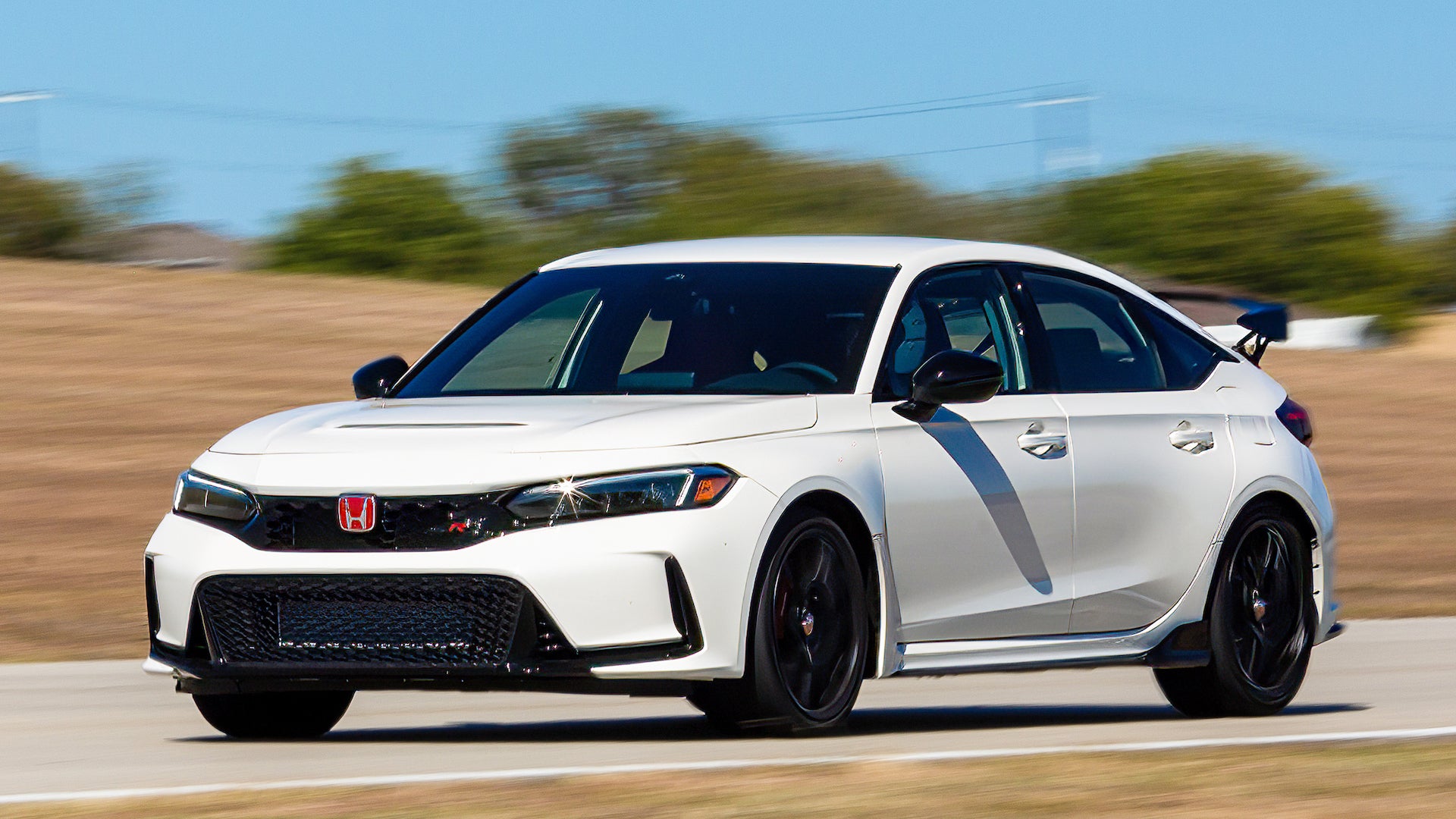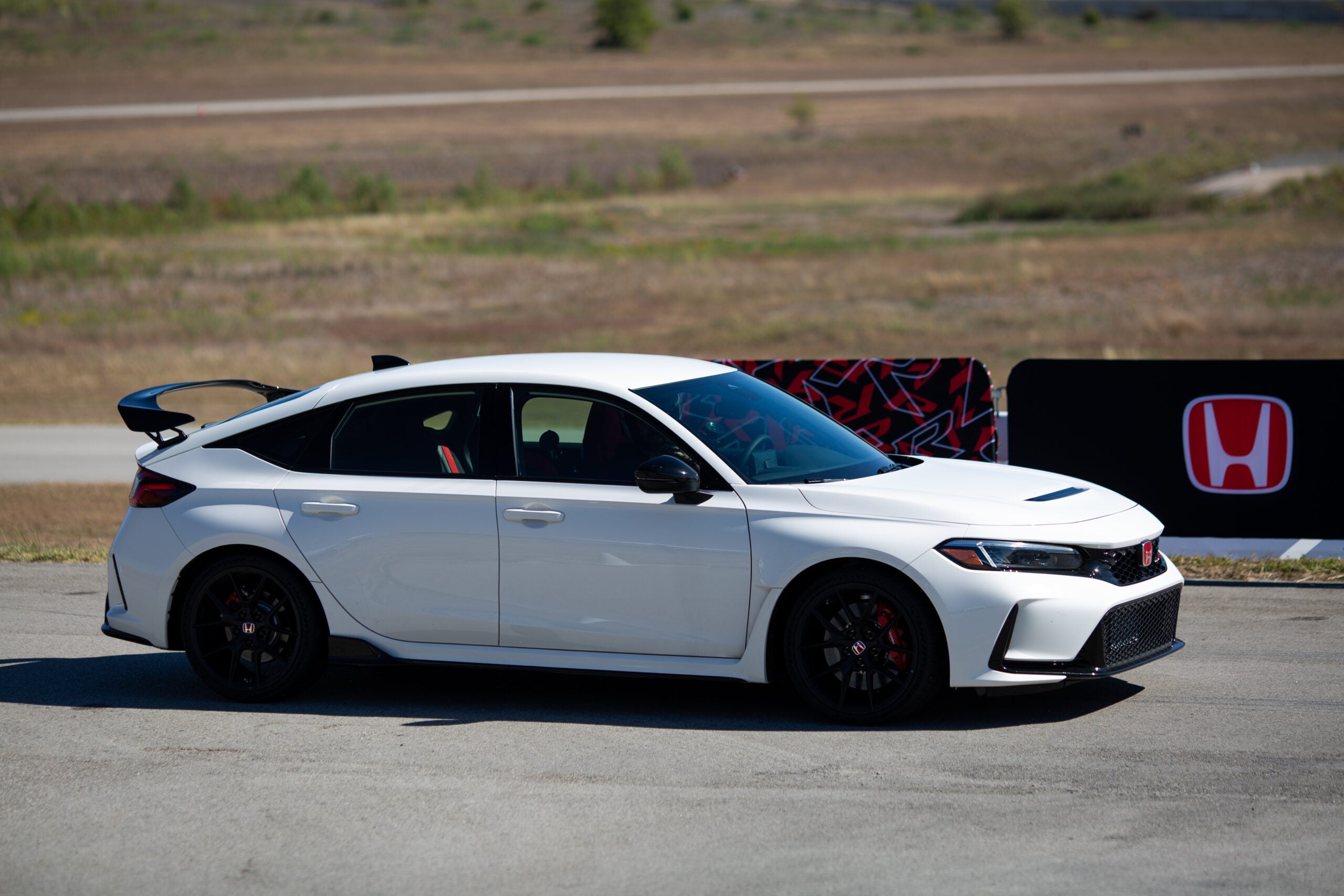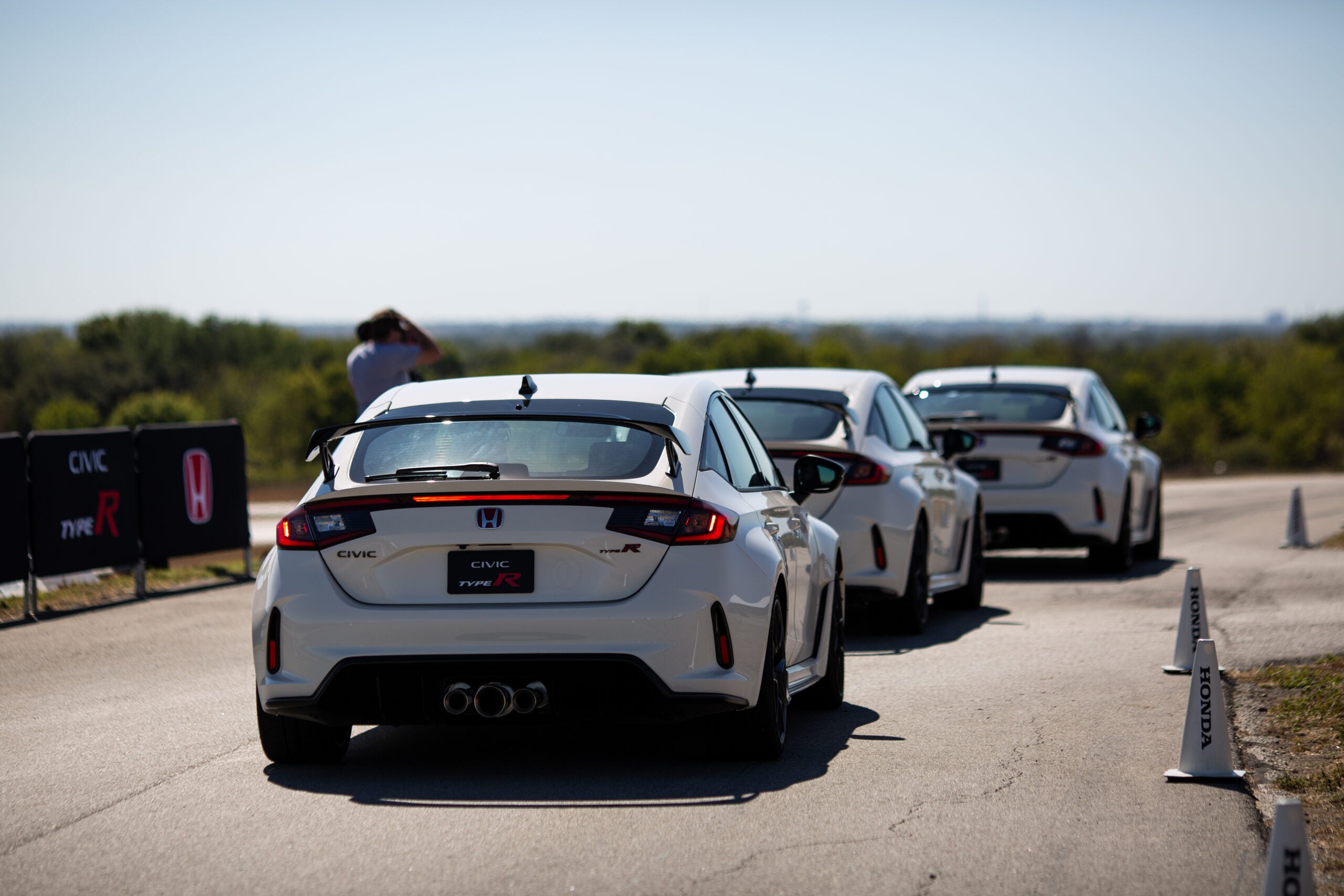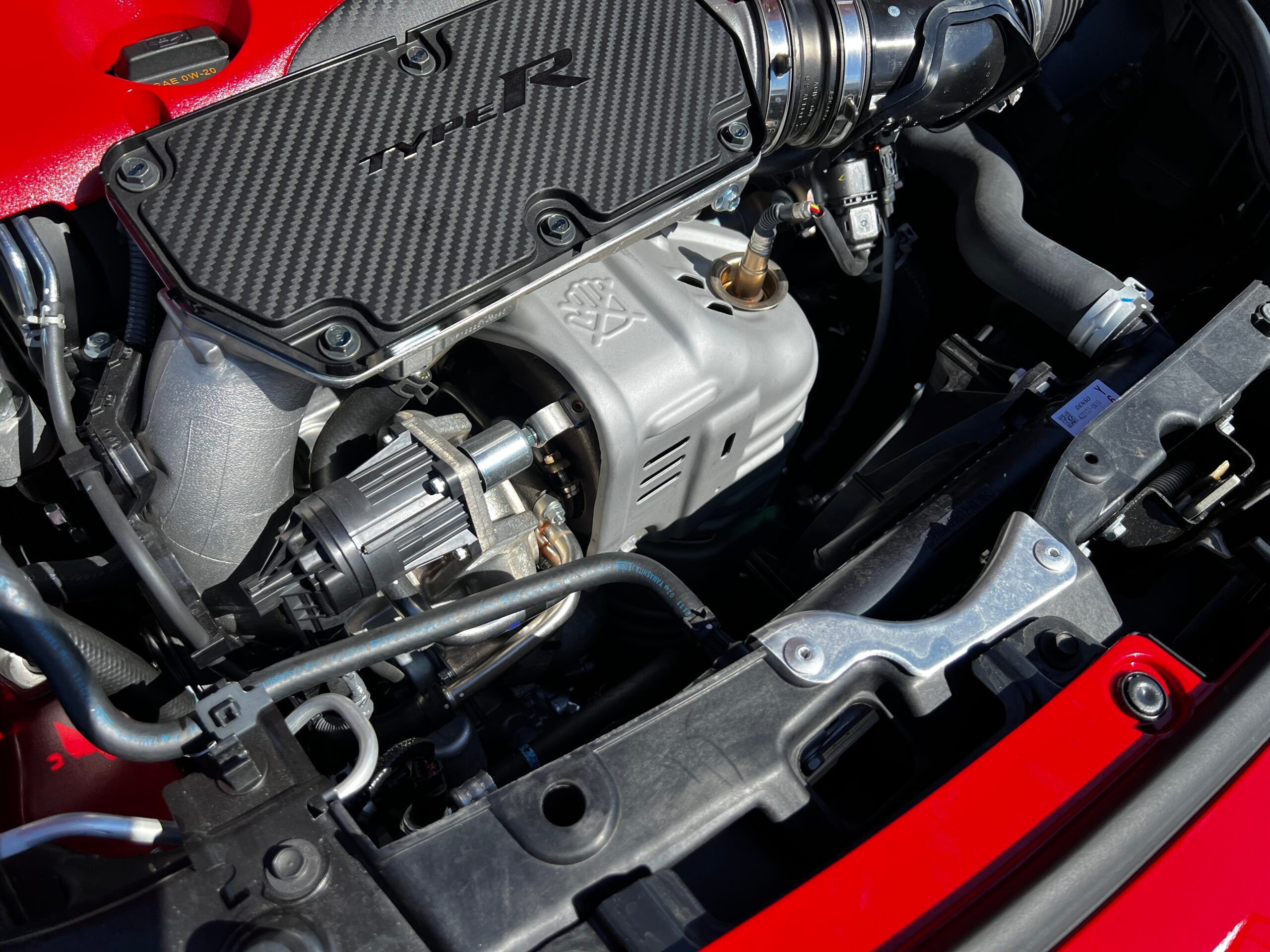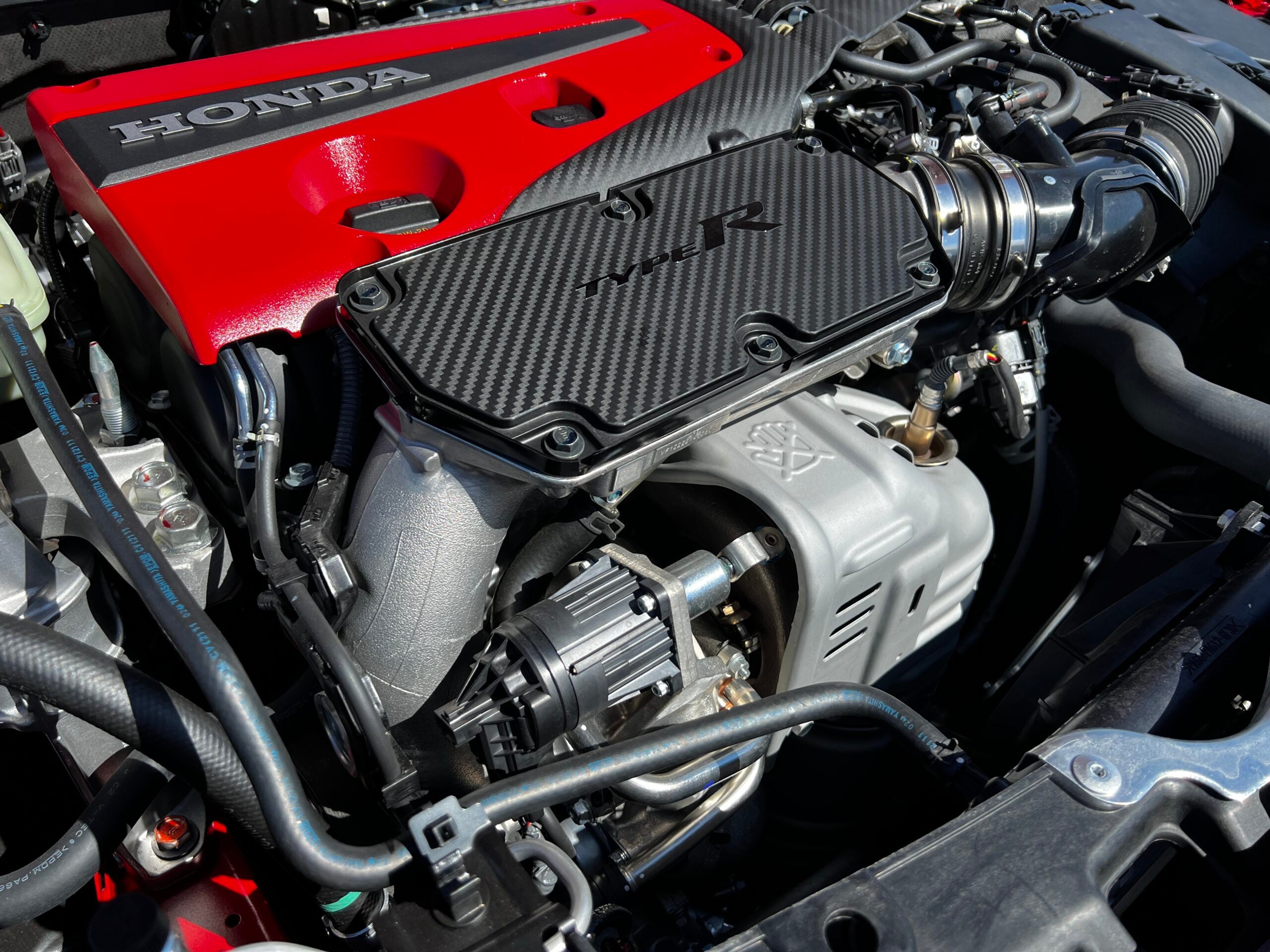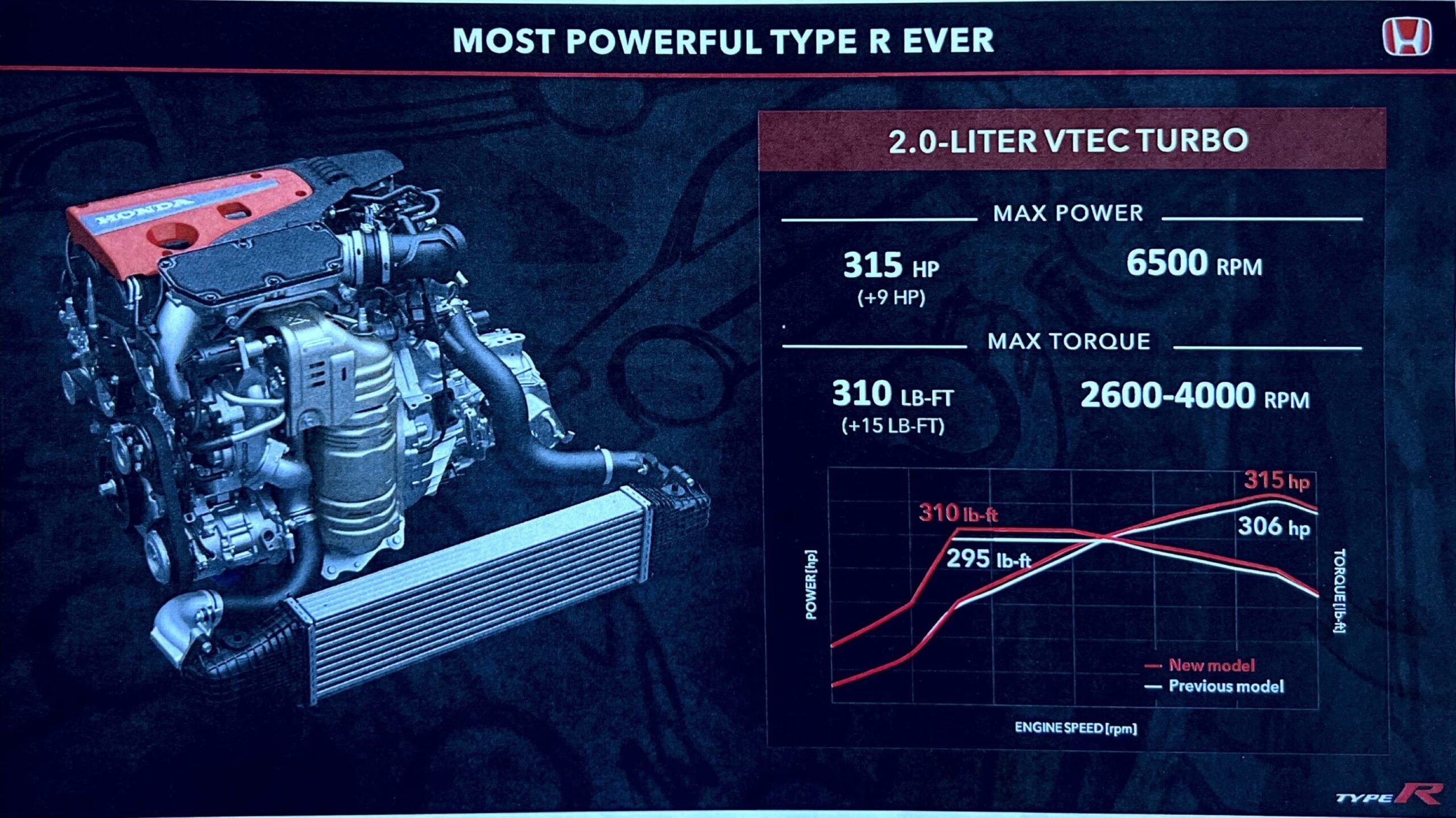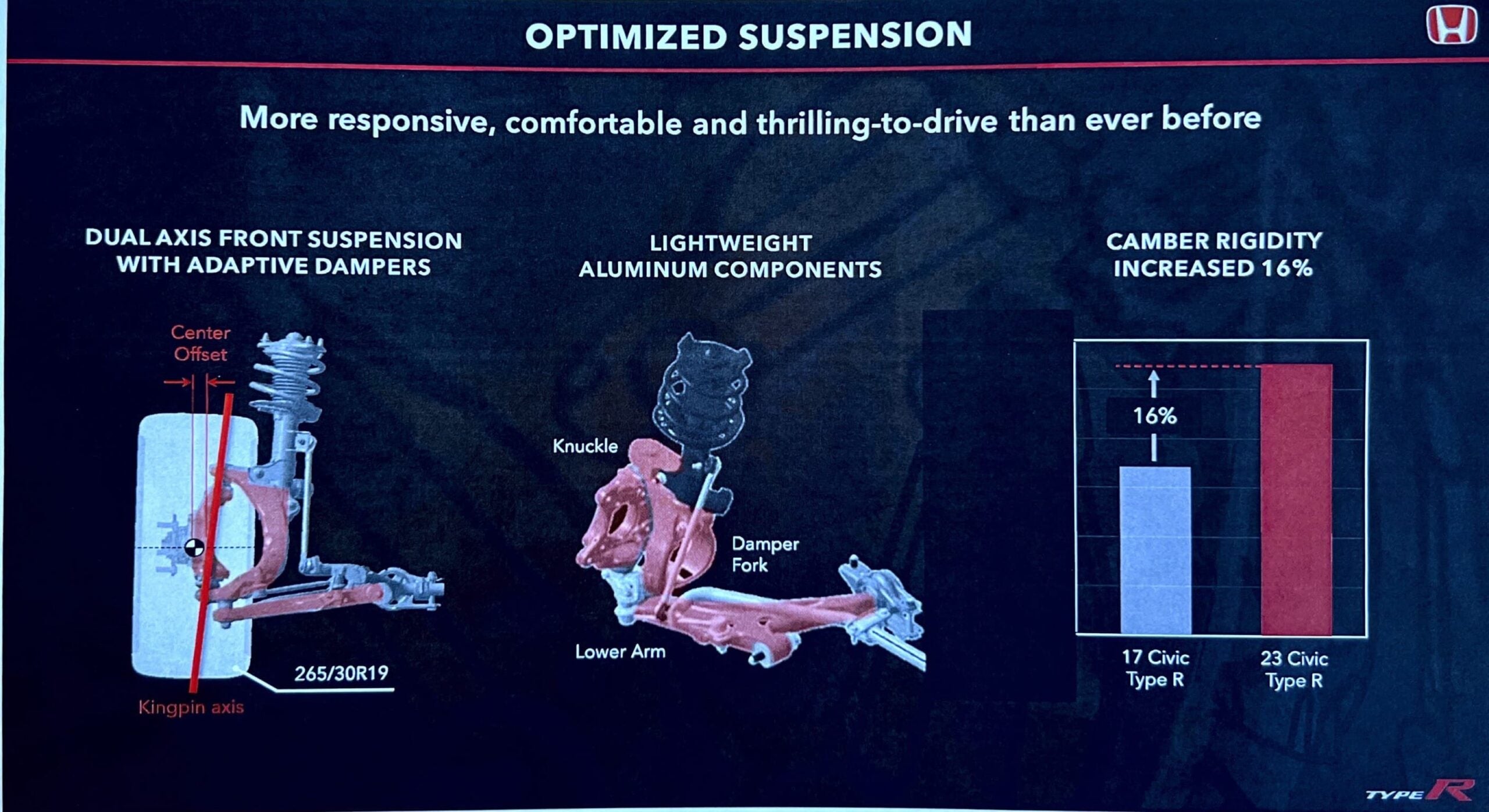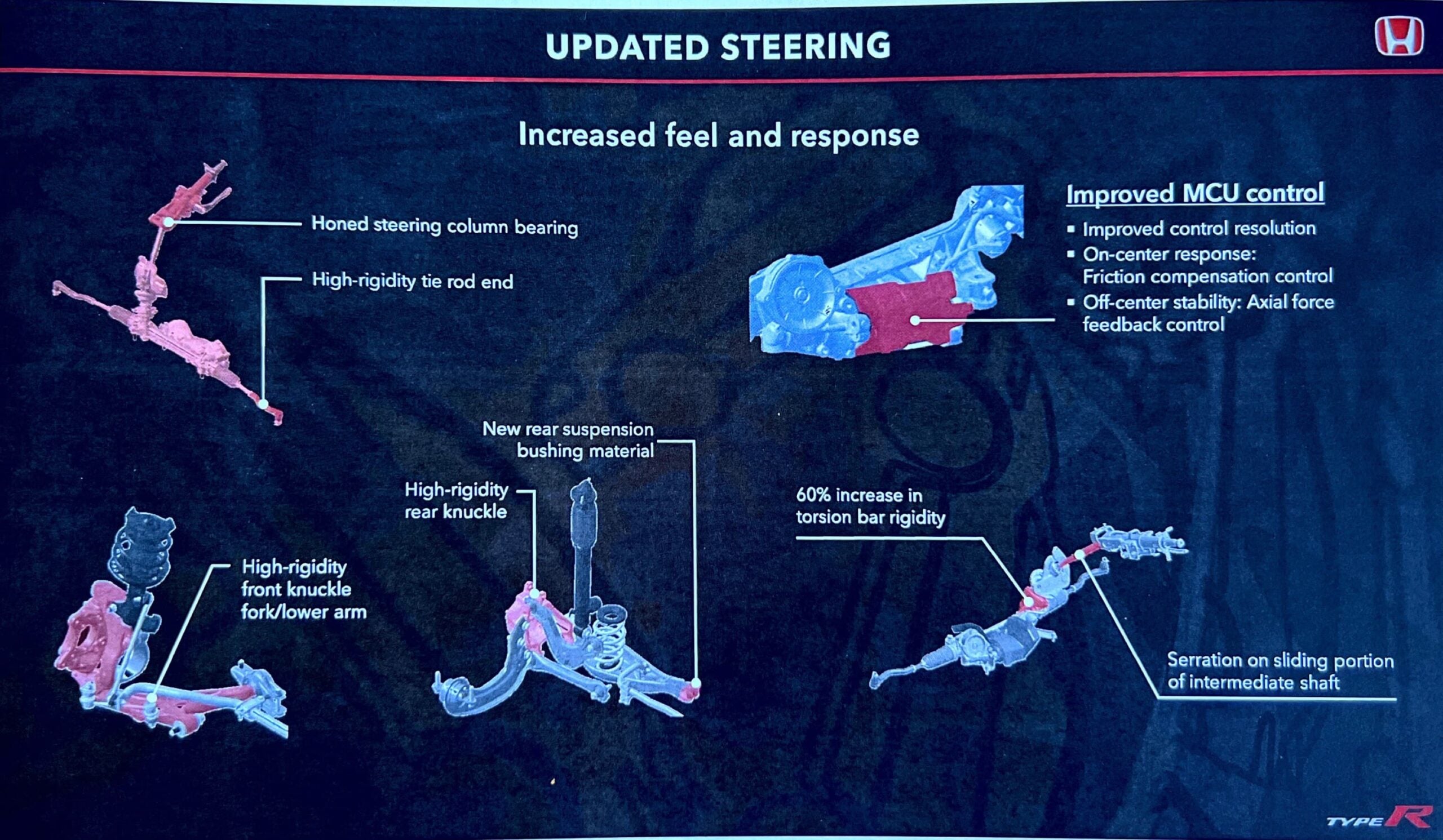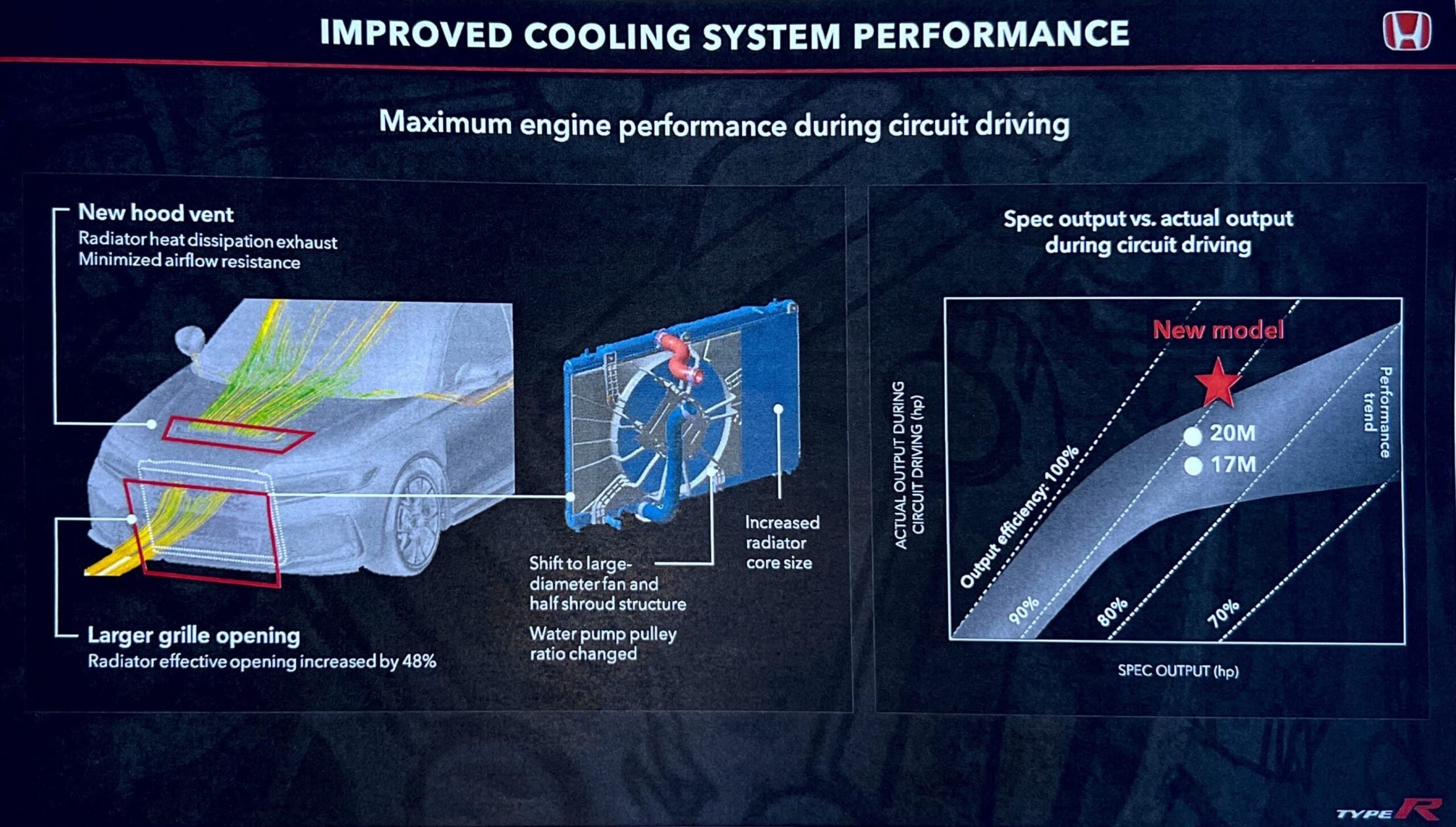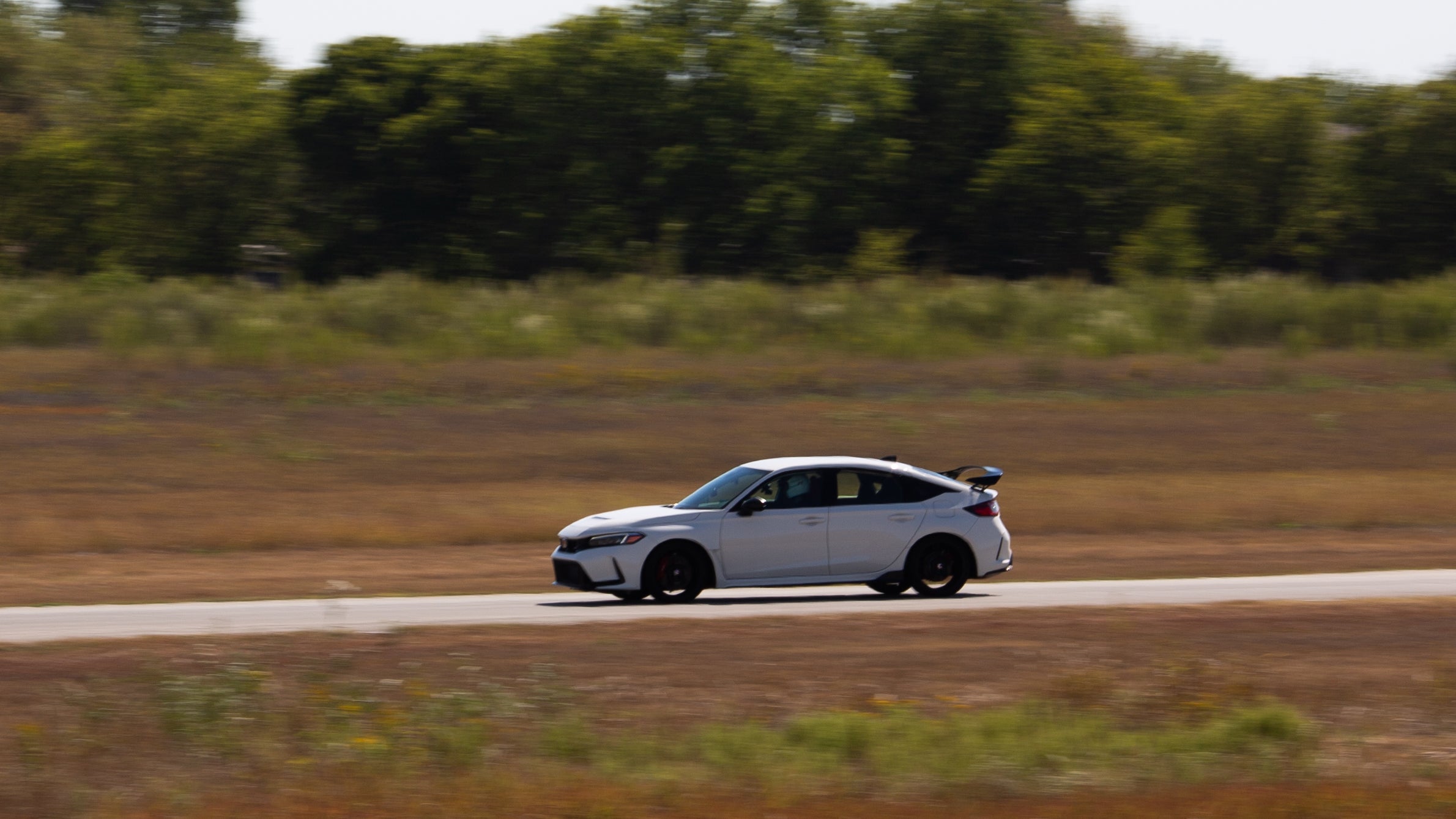Fourteen hundred miles from home, at a race track I’ve never driven before, I experienced the 2023 Honda Civic Type R at its angriest: From the passenger seat. I giggled and marveled at four-time Formula 1 race winner Sergio Pérez mercilessly overdriving one of a few new CTRs in existence. Later that day, I had my turn at being much slower than an F1 driver in the newest Type R.
As an owner of the polarizing 10th-generation Civic Type R, which I've taken to the track, getting the chance to drive the restyled 11th-generation (chassis code FL5 for nerds like me) at Harris Hill Raceway just outside of Austin, Texas was something I couldn’t wait to do. After Honda’s seemingly endless teases of this car, I can finally deliver insight on the engineering, design, and driving experience.
Angles of the new CTR. Chris Rosales
Underneath the substantially reworked body panels of the new Type R is the same platform that made up the rigid spine of the previous car. At the first few glances, it looks like a lot of carryover: same K20C1 turbocharged 2.0-liter four-cylinder engine, same separate hub carrier front suspension, same large Brembo brakes. But nearly every detail, major and minor, was reworked by Honda and optimized with uncanny precision.
It’s clear by studying some of the engineering highlights that customer complaints were heard. The previous-generation car had well-known issues with cooling, so the new Type R substantially reworks the cooling package. Not only is the radiator larger in surface area, it’s thicker too, adding overall cooling capacity. The intercooler is substantially larger and has completely redesigned inlets and outlets with slightly larger diameter piping. What really makes these upgrades come alive is a functional vented hood with a complete repackaging of the airflow through the engine bay. The area behind the radiator and in front of the turbo was decluttered and cleared for an airflow path directly to the hood vent. It’s a brute-force solution that should work well.
The engine bay of the 2023 Civic Type R compared to my 2019 Type R. Chris Rosales
Suspension-wise, the car makes use of a completely different wheel and tire package. Instead of the old car’s 20-inch wheels with 245mm-wide tires, 19-inch wheels with 265mm tires are the shoes of choice. In the same place, the old Continentals are swapped out for ultra-grippy but softer sidewall Michelin Pilot Sport Cup 2s. These are dealer-installed and apparently specifically Honda-tuned, with the car having a set of Michelin Pilot Sport 4S tires as standard. I couldn’t find any sidewall markings to indicate that the tire was anything more than a retail Cup 2, and the fact that they’re dealer-installed feels like a cheeky way to improve test numbers. Anyone can get dealer-installed tires. Just ask.
Then the engineers turned to retuning the geometry and steering to compensate for the added width and change in tire characteristics. The steering system was completely retuned with a 60% stiffer torsion bar, as well as updated hardware and software for the electronic assist. The old car’s cheatcode of a front suspension makes a return in concept, but the geometries were tweaked to optimize the new setup. Finally, the rear suspension gets a slight tweak with bushing stiffness on the lower control arm, which should change the toe-in characteristics. Translated from nerd: this car should be a lot more playful in corners.
Slides from the CTR technical presentation. Honda
A more rigid body compared to the previous car gives the suspension a better platform to work with. Rounding it all off are tweaks to the turbocharger blade count and shape to increase response while giving the car a power bump of nine horsepower and an additional 15 lb-ft of torque. Then my keenly-tuned eyes from wrenching on my own Type R spotted dozens of small changes to engine bay, like the reinforced throttle body boost hose. This car was comprehensively reengineered.
Pricing, however, is probably the biggest single change. There’s no way around it: it’s $5,000 more expensive than before, making this a $43,990 Honda Civic. While the old car was a bit of a value proposition, this one knows what its worth.
With undulations, decreasing-radius, second-gear turns, and a ruthlessly uneven surface on corner exits, Harris Hill was a prime place to test a hot hatchback.
Clambering into the car was a familiar feeling. Everything that was great about the previous car remains with subtle improvements. The seating position is low and the reworked seats improved comfort for my body shape while also being lighter than before. Tooling around with the shifter before going out for my session revealed a slightly reworked linkage but the same glorious teardrop-shaped knob placed high and close to the steering wheel. Looking over the hood of the new car, those cool motorsports-style shift lights in my peripheral vision, the Type R already felt like something special.
And the car delivered on the promise it made. The performance is astounding.
Some Type R zipping around Harris Hill Raceway. Chris Rosales
Dynamically, Honda’s hot hatch was completely rethought. Where the previous Type R was a manic, turn-in crazed lunatic, this new version is magnitudes more linear and mature. Of course, the grip is impressive and the way it can scratch away at the pavement for traction is in a different league from other front-wheel-drive cars. It’s the way that it goes about its business that is the most notable change, rather than an outright revolution in laptime.
Steering the Type R unearthed the most interesting revelation. Instead of the heavy on-center and lighter off-center feel of my car, the new CTR has a much more linear effort curve. In a lot of ways, it feels less alert but makes the car even more approachable than before. The steering, while possessing nice weight and a slightly slower ratio, still isn’t close to perfect (like the Hyundai Veloster N’s psychopathic buzz and springiness,) nor does it come alive and fight when the rear of the car comes around.
And rotate it will. This car wants to dance. Rock-solid stability was traded for outright playfulness, with the welcome ability to steer on the throttle. Lifting mid-corner gave me obvious rotation and oversteer, while slicing the throttle back open ended the party quickly, giving way to gravity-bending traction. The dampers, which I tested in all three modes of Comfort, Sport, and +R, have a wider range of adjustability while damping is improved across the board. Comfort is softer and +R is stiffer than before, with Sport now leaning much closer to +R.
Taking advantage of the traction comes a lot sooner, too. Throttle response is improved notably and boost comes on sooner and smoother. An 18% lighter flywheel assists the quick-shifting six-speed manual, which has a linkage that feels even more mechanical and less cable-shifted than ever.
Most importantly, the car comes alive as a cohesive whole. With the shift lights furiously blinking at the bottom of my peripheral vision, every shift, downshift, steering input, and braking event weaved into one another with intuitive fluidity. The time I had with the car went by in a flash. Before I knew it or wanted to be, I was sitting trackside, helmet in hand, a warm breeze playing across my visage.
The new Civic Type R is genuinely magnificent. Impressively complete in its engineering, it feels pure Honda in the way that that engineering smooths out every last imperfection the car could have. It’s definitely less ragged than the previous car and I think this new attitude will shine on the road more than the track. Less alive, more playful, but also more competent is where I would put this machine. However, the track has a habit of killing the nuances of a driving experience.
It’s a definite step or two improved from the previous car and it most certainly still possesses that car’s Type R magic. Its soul might be a touch different, but it’s just as ensnaring and adrenaline-pumping. The FWD king hasn’t given up its crown, but it learned how to behave itself a little better, too.
